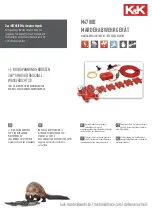
LISA-C2 series and FW75-C200 - System Integration Manual
UBX-13000620 - R21
Early Production Information
Design-In
Page 57 of 103
2.3.2
Footprint and paste mask (LISA-C200 only)
The following figure describes the footprint and provides recommendations for the paste mask for LISA-C200
modules. These are recommendations only and not specifications. Note that the copper and solder masks have
the same size and position.
33.
2 m
m
[
1307.
1
m
il]
22.4 mm [881.9 mil]
2.
3 m
m
[90.
6 m
il]
0.
8 m
m
[31.
5 m
il]
1.
1 m
m
[43.
3 m
il]
0.
8 m
m
[31.
5 m
il]
1.0 mm
[39.3 mil]
5.7 mm
[224.4 mil]
33.
2 m
m
[
1307.
1
m
il]
22.4 mm [881.9 mil]
2.
3 m
m
[90.
6 m
il]
1.
2 m
m
[47.
2 m
il]
1.
1 m
m
[43.
3 m
il]
0.
8 m
m
[31.
5 m
il]
0.9 mm
[35.4 mil]
5.7 mm
[224.4 mil]
0.
6 m
m
[23.
6 m
il]
Stencil: 150 µm
Figure 30: LISA-C200 modules suggested footprint and paste mask
To improve the wetting of the half vias, reduce the amount of solder paste under the module and increase the
volume outside of the module by defining the dimensions of the paste mask to form a T-shape (or equivalent)
extending beyond the copper mask. The solder paste should have a total thickness of 150 µm.
The paste mask outline needs to be considered when defining the minimal distance to the next component.
The exact geometry, distances, stencil thicknesses and solder paste volumes must be adapted to the specific
production processes (e.g. soldering etc.) of the customer.
The bottom layer of LISA-C200 series modules has one unprotected copper area for GND, shown in Figure 31.
Consider “No-routing” areas for the LISA-C200 modules footprint as follows: signal keep-out area on the
top layer of the application board, below LISA-C200 modules, due to GND opening on module bottom
layer (see Figure 31).
















































